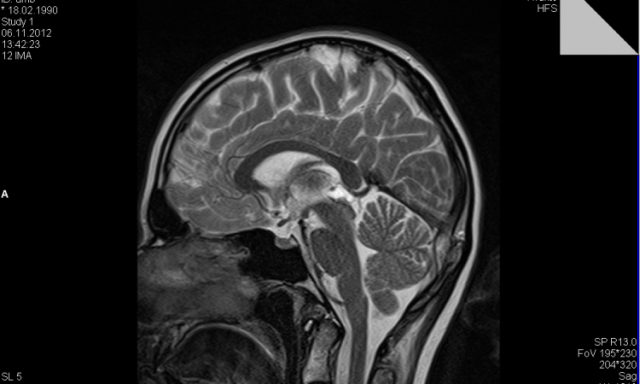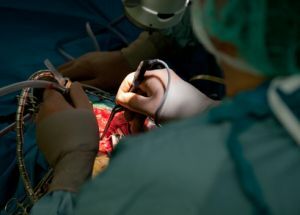 Pituitary adenoma is the most common tumor lesion of the Turkish saddle. Given that most of the adenomas of the pituitary gland are clinically "silent", it is difficult to determine their exact prevalence.
Pituitary adenoma is the most common tumor lesion of the Turkish saddle. Given that most of the adenomas of the pituitary gland are clinically "silent", it is difficult to determine their exact prevalence.
In postmortem studies, the disease is detected in 14% of cases, according to radiological research - even in 22%.More often, the adenoma of the pituitary gland occurs in women, in a ratio of 2: 1.
The main division reflects the ability to produce hormones:
- functional adenomas( producing hormones and causing relevant clinical signs);
- non-functional adenomas( which do not produce a clinically significant amount of hormones).
The first group most often exhibits a typical clinical picture, corresponding to overproduction of hormones. In the second group symptoms of oppression of the pituitary gland and surrounding structures( optic nerve, oculomotor nerve, cavernous sinus) predominate.
Infrequent adenoma of the pituitary gland may manifest hydrocephalus.
Treatment of prolactinoma
Prolactinoma is a kind of adenoma. Practically in all cases, with drug treatment, dopamine agonists are shown. More 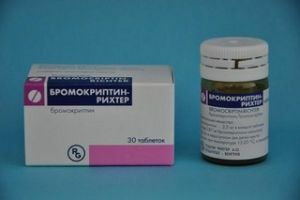 low levels of prolactin can be achieved within a few days, reducing adenoma - from several weeks to several months.
low levels of prolactin can be achieved within a few days, reducing adenoma - from several weeks to several months.
Bromocriptine and Cabergoline are most commonly used. Some randomized studies show a higher Cabergoline effect( 83% versus 59% of prolactin normalization).
Only 10-20% of patients with a micropropactinoma and 20-30% with a macro-prolactinoma have pharmacological treatment ineffective, and patients are considered pharmacologically stable.
Side effects of treatment include nausea, orthostatic hypotension, gastrointestinal disorders and the theoretical risk of valvular regurgitation.
Treatment of STH-secreting formations
In recent years, the development of pharmacological treatment of STH-secreting adenomas has been achieved. There are 3 types of medications for drug treatment:
- dopamine agonists;
- analogues of somatostatin;
- receptor antagonists MET.
Dopamine agonists that bind to dopamine receptors can paradoxically reduce the overproduction of MET, but the effect of this treatment is relatively low.
Bromocriptine leads to inhibition of MET in only 20% of patients and normalization of IGF-I in 10% of patients. The effect of Cabergoline is higher, but in the long run about 20% of patients get normalization of IGF-I.The most common side effects include nausea, constipation, headaches, mood swings and hypotension.
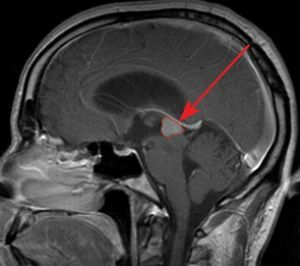 Somatostatin analogues are more effective in the pharmacological treatment of STH-secreting adenomas. They suggest a long-term effect of octreotide and lanreotide, which have the greatest affinity for somatostatin receptors 2 and 5 subtype.
Somatostatin analogues are more effective in the pharmacological treatment of STH-secreting adenomas. They suggest a long-term effect of octreotide and lanreotide, which have the greatest affinity for somatostatin receptors 2 and 5 subtype.
This therapy is usually used when the effect of surgical treatment is insufficient or in combination with radiosurgical treatment.
Clinical symptoms, such as headaches, soft tissue swelling, joint pain, carpal tunnel syndrome are relieved after therapy, in approximately 70% of patients.
Reduction in the volume of adenoma occurs in 20-50% of patients. The most common side effects include gastrointestinal difficulties, in particular, abdominal pain and diarrhea. Potentially serious is the formation of stones in the gallbladder( up to 30% of cases).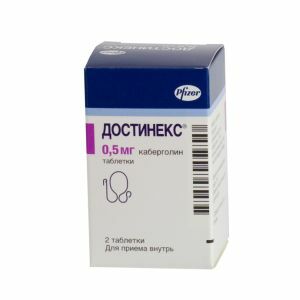
Another possibility is the use of the MET receptor antagonist: Pegvisomant. It blocks dimerization and thus stimulates MET receptors. Consequently, the production of IGF-I is declining.
With adequate dosage, it is possible to achieve normalization of IGF-I levels in almost all patients.
Another possibility is the combination of treatment with analogues of Somatostatin with Pegvisomant. Side effects of treatment include increased liver enzymes.
Disadvantages of pharmacological treatments include their high cost and side effects.
Surgery site
Despite the advances in the field of pharmacological treatment, in the treatment, in most cases, the treatment is dominated by surgical treatment. In many patients, it results in immediate reduction of reproduced hormones and the removal of accompanying symptoms.
And, finally, surgical treatment is more economical in comparison with long-term intake of pharmacological preparations.
Surgical operation is clearly recommended for patients who can rely on radical removal of adenoma. For patients in whom this is not possible, the indications for surgery are relative.
Reduction of adenoma carries with it mitigation of the effects of macroadenoma( visual impairment, etc.) and increases the chance of effectiveness of further pharmacological or radiosurgical treatment.

Treatment of ACTH-secreting adenomas
The main method of treatment of patients with ACTH-producing adenomas is surgical intervention. Almost always recommended transsphenoidal resection.
In case of insufficient intervention effect, a second operation can be assigned.
Another alternative is radiosurgery, pharmacological therapy and their combination. In radiosurgery, remission is achieved in 63-73% of cases, relapses occur in 11%.It is prescribed to patients whose surgical intervention has not given sufficient effect.
Folk methods of treatment
Treatment of pituitary adenoma with folk remedies is possible at the initial stages of tumor development:
- In the initial stages, you can use mixture of pumpkin and sesame seeds, honey, ground ginger and primrose .
This "assorted" should be taken 4 times a day for 1 tsp. - Another common treatment for adenoma is 10% tincture of the bug .The finished product, which can be bought from
 in a pharmacy, should be taken in a diluted form: 10 drops of tincture per glass of water.
in a pharmacy, should be taken in a diluted form: 10 drops of tincture per glass of water. - The tincture of hemlock and olive oil can also help. It is used, mainly, as a nasal agent: a few drops in each nostril. For oral administration, 10% strength of hemlock in diluted form is used. Begin the procedure with the 1 st drop. Daily for 40 days, you should increase the dose by 1 drop, take only one drop, in the next 40 days - decrease by 1 drop.
- Experts on alternative medicine advise in adenoma of the pituitary to take tinctures from herbs of lemon balm, sage, plantain and valerian, and also from ashberry seeds .For preparation, mix 1 tbsp.of each component and pour boiling water. Take the medicine you receive by half a cup during the day before eating.
Tumor development in women
In regard to adenoma of the pituitary gland in women, attention should be paid, first of all, to the state of pregnancy. During an "interesting situation", the pituitary gonadotropin and lactotrophic cells increase, while the placenta is created, which is the source of numerous hormones and enzymes that significantly affect and alter the function of the endocrine system. This, of course, has an effect on the course of pituitary diseases and their treatment.
The most common lesion of the pituitary gland is adenoma, especially prolactinoma and non-functional adenomas.
Microprolactinomas are not treated during pregnancy, macroprolactinoma, where there is a risk of placental growth by stimulating estrogen, preventive dopaminergic agonists are taken.
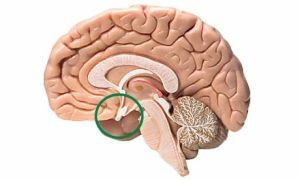 ACTH-secreting adenomas are very rare and difficult to diagnose, and active hypercortisolism is dangerous to the fetus and jeopardizes the mother.
ACTH-secreting adenomas are very rare and difficult to diagnose, and active hypercortisolism is dangerous to the fetus and jeopardizes the mother.
Pituitary adenoma in women is diagnosed on the basis of headaches and thyroid function using a specific image during MRI.Treatment is limited to hormone replacement.
In women taking growth hormone, its use in pregnancy can be ruled out - its role is assumed by placental growth hormone.
Complex treatment of pituitary adenoma requires cooperation of a neurosurgeon, endocrinologist, radiosurgeon, radiologist and ophthalmologist.
The goal is to act on the tumor so that it does not interfere with the patient's normal life without the need for hormone replacement therapy and the impact on vision. Despite the progress in pharmacological treatment, the effectiveness of neurosurgical therapy remains in most patients the main method of treatment.



